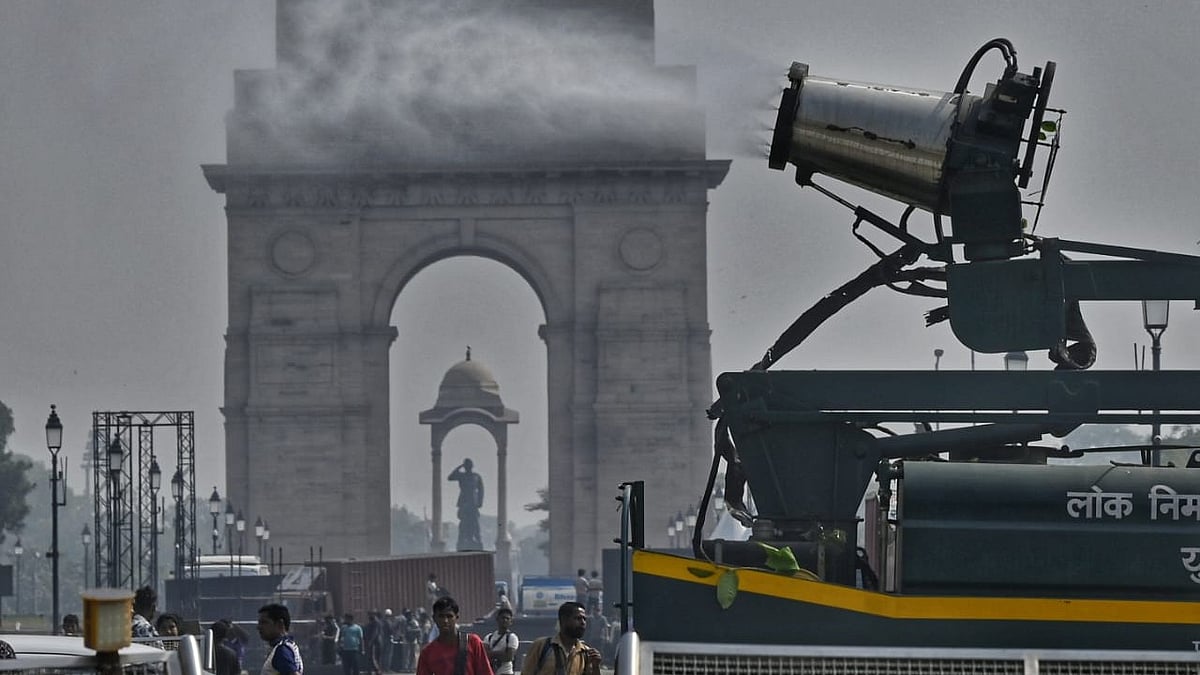Environment
When light meets haze: Delhi awaits Diwali under a choking sky
City’s pollution worsens even before the festival, with Anand Vihar’s AQI hitting 384 (“very poor”) and several areas crossing 200

As the festival of lights draws near, a murky haze has already settled over Delhi’s skies — the familiar, suffocating herald of a season that should have shimmered in gold but now glows in grey.
The national capital, once again, finds itself gasping for breath as air quality plunges to worrying levels, with the Air Quality Index (AQI) clocking in at 252 on Saturday morning — marking the fifth straight day of “poor” air.
The city’s struggle with pollution has deepened even before Diwali’s first spark. Anand Vihar recorded an AQI of 384, sliding into the “very poor” category, while scattered pockets across Delhi breached the 200 mark. From the hum of idling engines to the smog veils hanging low over flyovers, the city’s daily life unfolds under a thickening canopy of toxins.
Officials from the Central Pollution Control Board (CPCB) warn that relief is unlikely in the coming days. Vehicle emissions have emerged as the single biggest contributor to Delhi’s deteriorating air, while stagnant winds and falling temperatures have trapped pollutants close to the ground. The early onset of the Northeast Monsoon has done little to cleanse the skies.
Published: undefined
For months, Delhi had enjoyed a rare reprieve — a clean-air streak that began in June and stretched through the monsoon. But with winter inching closer and stubble burning resuming in the neighbouring plains of Punjab and Haryana, the capital’s seasonal descent into a health emergency has begun anew.
The Supreme Court, seeking to balance festive fervour with public health, has permitted the sale and bursting of green firecrackers — those certified by NEERI and PESO — during Diwali, but under strict conditions. They may be sold only from 18 to 21 October, and used between limited hours — 6 to 7 am and 8 to 10 pm on Diwali eve and the festival day.
While the ruling was meant to offer a “practical” compromise, environmental experts fear it may end up worsening the crisis. “Air pollution in Delhi-NCR is a year-round problem, not just a winter issue,” said environmentalist Amit Gupta. “Our fight against pollution is weak because institutions are under-resourced and overburdened.”
Published: undefined
Dipankar Saha, former head of air laboratories at the CPCB, called the decision “rational” but warned that awareness and enforcement remain the missing links. “Green crackers are better only if they replace traditional ones — not add to them,” he said.
Sunil Dahiya, founder of Envirocatalysts, was more critical. “Legalising even ‘green’ firecrackers during the festive period effectively legalises heightened emissions,” he argued, noting that the cumulative volume of crackers could easily erase the marginal pollution savings.
Meanwhile, the Commission for Air Quality Management (CAQM) has tightened curbs, banning entry of polluting commercial vehicles into Delhi from 1 November and authorising action against officials failing to prevent stubble burning.
Yet, as the city braces for Diwali night — when joy and smog inevitably collide — Delhi’s skyline offers a haunting metaphor: a city that celebrates with light, even as it chokes on its own breath.
With PTI inputs
Published: undefined
Follow us on: Facebook, Twitter, Google News, Instagram
Join our official telegram channel (@nationalherald) and stay updated with the latest headlines
Published: undefined